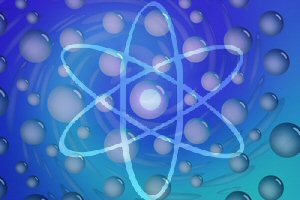ORNL Nuclear Cavitation – Conflict Goes Public (Part 8)

Oak Ridge Nuclear Cavitation Confirmation
July 25, 2013 – By Steven B. Krivit –
This is Part 8 of “2001 Oak Ridge Nuclear Cavitation Confirmation Uncovered.”
This is a New Energy Times Special Report. The first part of this series published on July 18, 2013.
Oak Ridge Issues Press Release (March 4, 2002)
On March 4, 2002, ORNL issued its press release about the forthcoming Taleyarkhan group’s Science paper. The press release led off with the tritium data. The neutron results, however, reflected the earlier incorrect information from Shapira and Saltmarsh.
“Attempts to confirm these results by looking for the telltale neutron signature of the deuterium fusion reaction have yielded mixed results,” the ORNL press release says. “While there are indications of neutron emission in the newly published results, subsequent experiments with a different detector system show no neutron production.”
Bob Park’s newsletter, along with this incorrect information in the press release, made a widespread impact. To restate the problem, the ORNL science writers failed to understand the distinction between measurement of neutron singles counts and measurement of neutron/SL flash coincidences.
Despite the fact that the Taleyarkhan group explained in its rebuttal that Shapira and Saltmarsh’s own neutron data, taken with the PD detector, confirmed the excess neutron production, the ORNL press release didn’t reflect this information.
The press release said that Lee Riedinger, ORNL’s deputy director for Science and Technology, said that the “results suggest the need for additional experiments.”
“In particular,” the release quoted Riedinger, “the difference in the two sets of neutron measurements must be clarified.”
At that time, the erroneous perception that Shapira and Saltmarsh had performed their own independent experiments was not widespread, thanks to the following correct information in the ORNL press release: “The second set of [neutron] measurements was performed with the cooperation of the authors in their laboratory.”
The context of the sentence made clear that the measurements were performed in the Taleyarkhan group’s lab.
The Conflict Goes Public (March 5, 2002)
Kenneth Chang talked with Saltmarsh and reported the news the next day in the New York Times.
“This is an intriguing idea,” Saltmarsh said. ”It’s a bit off the wall. But that experiment does not support that it does happen.”
Saltmarsh told Chang that ”it’s easy to be fooled” and that the “researchers were detecting random particles from the background, not the product of fusion.”
Saltmarsh suggested that the excess neutron counts seen only during the test runs and not the control runs were attributable to random particles. This was the second alternative hypothesis.
Unlike Park, Chang had access to the Taleyarkhan group’s rebuttal and knew about the dispute over the two sets of neutron measurements. Chang wrote that, although “the number of neutrons was about 1 percent higher, the emissions did not coincide with the flashes of light.”
Chang quoted Saltmarsh, who went beyond what he had carefully written in his and Shapira’s paper.
”We see no evidence for any excess neutrons,” Saltmarsh said.
Saltmarsh knew that was not what the Taleyarkhan group’s data said. And he knew that this was not what his and Shapira’s own data said.
“Using a different detector from the laboratory,” Chang wrote, “the physicists, Dan Shapira and Michael J. Saltmarsh, found no sign of the telltale neutrons that would be emitted by fusion.”
Chang wrote accurately that Shapira and Saltmarsh had only used an independent detector, rather than performed an independent experiment. Journalist Charles Seife, writing for the news side of Science, on March 8, 2002, however, reported the Shapira and Saltmarsh work as their own experiment.
“But other scientists,” Seife wrote, “citing another Oak Ridge experiment that seems to belie the claim, are likening the paper to cold fusion.”
Seife introduced his own easy-to-follow yet erroneous interpretation of Shapira and Saltmarsh’s conclusion.
“They concluded that Taleyarkhan’s results had been an illusion,” Seife wrote.
Seife wrote, “Taleyarkhan and colleagues dispute Saltmarsh’s interpretation of the data and are posting the details of their objections on the Web.”
In a 2008 book he wrote, Seife explained the nuclear cavitation conflict as a breakdown of the peer-review process. But in the case of the Taleyarkhan group’s paper, the journal side of Science abided by and succeeded with the peer-review process. Seife, however, did not do his part as a journalist in respecting the peer-review process.
Seife prominently featured Shapira and Saltmarsh’s paper — published only on the ORNL Web site — which had not been peer-reviewed. More than that, he did not inform readers that the critique from Shapira and Saltmarsh was published on the Web only and was not peer-reviewed. Furthermore, Seife omitted facts from the Taleyarkhan group which were available at the time and published on the Web.
Shapira and Saltmarsh later submitted a formal comment to Science, which did get peer-reviewed. But that took place months later, long after Seife’s story. Even though Seife spoke with Taleyarkhan in 2007, in Seife’s 2008 book he included no comments from the Taleyarkhan group about the Shapira and Saltmarsh paper.
Next Part: The Half-Truth of Shapira and Saltmarsh’s 1 Percent
Questions? Comments? Submit a Letter to the Editor.

